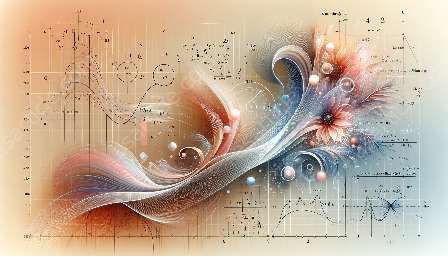Quantifying uncertainty is a critical aspect of mathematical and statistical analysis. It involves measuring the degree of doubt or variability in a given set of data or a particular process. This topic cluster will delve into the various methods, tools, and concepts related to quantifying uncertainty, and demonstrate its application in error analysis within the realms of mathematics and statistics.
Understanding Uncertainty
To comprehend the significance of quantifying uncertainty, we must first understand what uncertainty represents in the context of mathematics and statistics. Uncertainty is the lack of precise knowledge about the outcome of a measurement, calculation, or event. It is inherent in virtually all real-world data and phenomena, making its quantification a crucial endeavor to make informed decisions and draw reliable conclusions.
Measuring Uncertainty
Quantifying uncertainty demands robust measurement techniques and statistical tools. One commonly used approach is through the calculation of standard deviation and variance, which quantify the dispersion and spread of a dataset, respectively. These measures enable the assessment of how much individual data points differ from the mean, providing insights into the overall uncertainty within the dataset.
Another essential metric for quantifying uncertainty is probability. Through probability theory, uncertainty can be expressed in terms of likelihood, enabling the assignment of numerical values to various outcomes based on their probability of occurrence. This allows for a more structured and probabilistic understanding of uncertainty, facilitating better decision-making and risk assessment.
Error Analysis and Uncertainty
Uncertainty and error are closely intertwined concepts in the realm of mathematics and statistics. Error analysis involves the study and quantification of errors that arise in measurements, calculations, or experiments. By integrating uncertainty quantification into error analysis, it becomes possible to grasp the extent of errors and their associated uncertainties, fostering more accurate and reliable interpretations of experimental results and observational data.
Implications of Uncertainty Quantification
The implications of quantifying uncertainty reverberate across various fields and applications. In finance, understanding and quantifying uncertainty are pivotal for risk assessment and investment decision-making. Within the realm of physics, uncertainty quantification plays a crucial role in evaluating the precision and reliability of experimental measurements and theoretical predictions.
In the context of machine learning and artificial intelligence, quantifying uncertainty is fundamental for assessing the confidence and reliability of predictive models. Moreover, in medical research and epidemiology, uncertainty quantification aids in evaluating the robustness of statistical associations and findings, contributing to evidence-based decision-making and policy formulation.
Conclusion
Quantifying uncertainty through error analysis, mathematics, and statistics is fundamental for enhancing the reliability and robustness of data-driven decisions and empirical findings. Ranging from the exploration of uncertainty measurement techniques to understanding its implications across diverse domains, this comprehensive topic cluster provides a holistic perspective on the importance of quantifying uncertainty in real-world applications.

